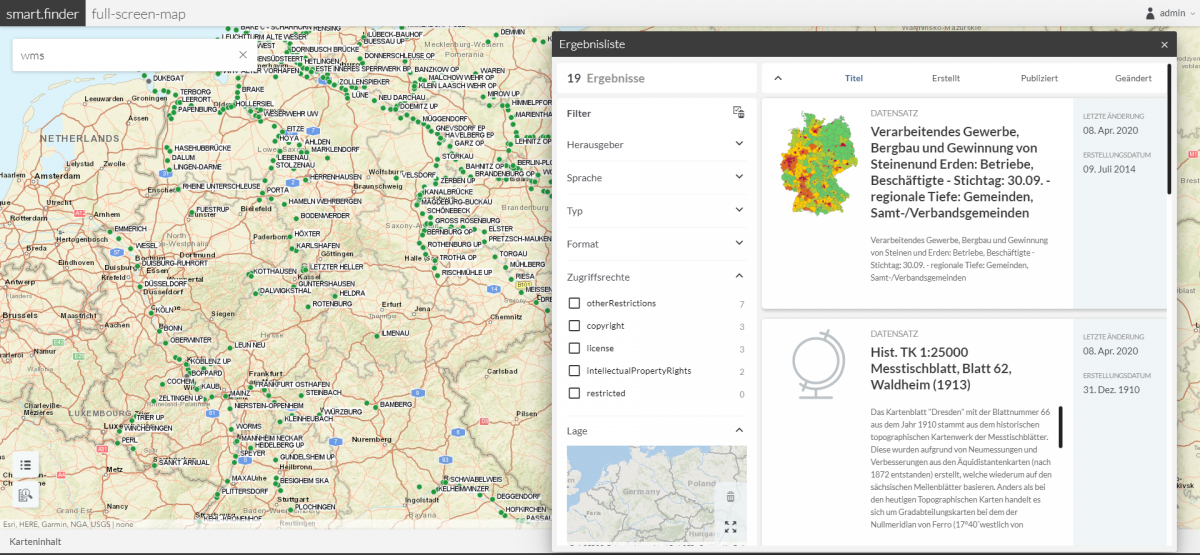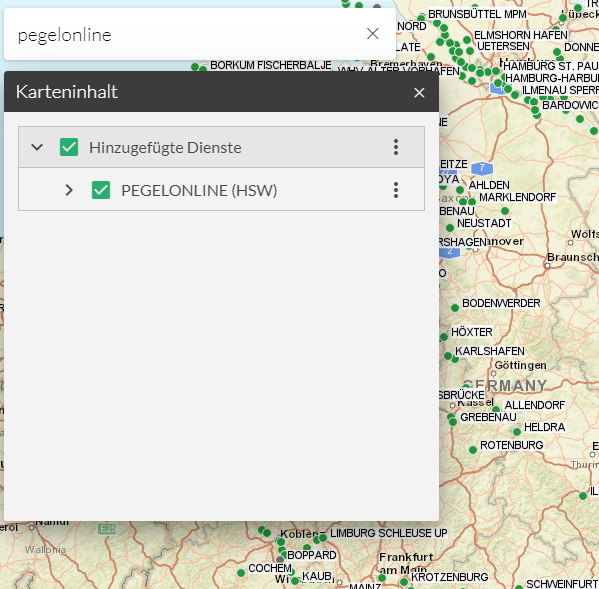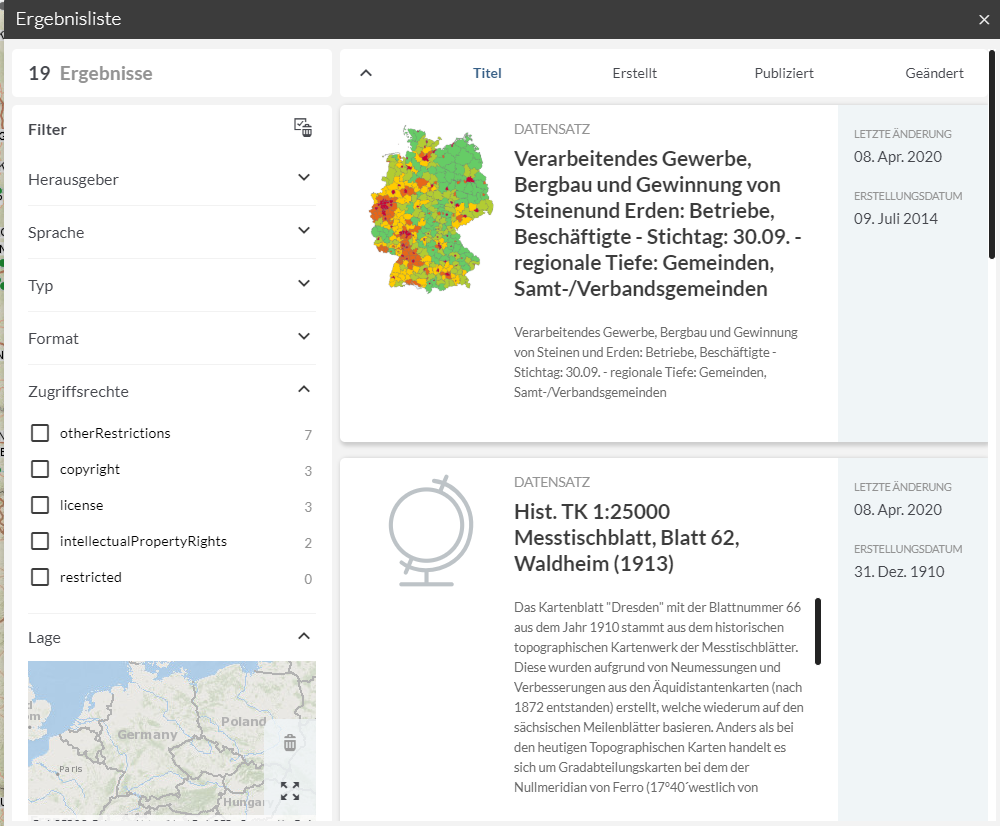With smart.finder 2.0 a new version of smart.finder is available for download, which offers a number of new functions. This version also includes an update of the basic technology. This article gives an overview of all important new functions and presents them in detail.
Support for map.apps 4
smart.finder and the map.apps Smart Search Extension are now completely based on map.apps 4, both for the client-side UI elements and for the delivered bundles. A combination of smart.finder 2.x with map.apps 3 is therefore no longer possible.

With the conversion to map.apps 4, two new components were integrated or developed in addition to fundamental innovations in the user interface:
map.apps TOC
The new map.apps TOC is used to display services instead of the previous map.apps MapFlow bundle:

New Result list
In addition to displaying the search results in the map.apps Resultcenter, an additional widget, the result list, is offered. This is the default display for search results and has a number of improvements:
- Better overview of the facets of the search results
- Confirmation when carrying out search operations
- More space for individual hits in the overview
- Sorting by preconfigured fields (title, date, etc.)
- Improved detail view
- No paging, but "endless" scrolling through the hits

Alternatively, the search results can also be displayed in the map.apps Resultcenter. This can be achieved for an app by a simple configuration.
Integration of map.apps Query Builder Bundle
From version 2.0 smart.finder supports the integration of the map.apps Query Builder bundle. This means that, in addition to the proposal search, more complex queries against a search index can be performed. The map.apps Query Builder bundle is not part of the delivery and can be obtained from the con terra Git Hub Repository if required.
Product documentation
The product documentation has been completely revised and is published in a new form for the first time with this release. The documentation can be accessed via https://docs.conterra.de. Registration is not required.
Bookmarks
Another new feature is the ability to save search results using browser bookmarks. This applies both to a complete result list and to the detailed view of individual documents. This is made possible by encoding the search query in the URL.
Example: Link to the search suggestion against the index 'core0' with the search term 'soil':
http://[HOST]:[PORT]/smartfinder-client/?lang=de#/search?core=core0&term=soil
Example: Link to a document with the ID "401f5845-c3fe-4981-9e6c-81c710288c2d
http://[HOST]:[PORT]/smartfinder-client/?lang=de#/datasets/401f5845-c3fe-4981-9e6c-81c710288c2d
Enhanced Indexing of Web sites
Web sites can now be searched, albeit with restrictions, for specific resources to index them separately. For example, PDF documents or similar linked on a page can be harvested by smart.finder.
Support for Apache Solr Data Import Handler
The core of the smart.finder server is still Apache Solr, currently in version 8.4. A special feature of Apache Solr are the so-called data import handlers. With their help, a variety of data sources can be indexed, e.g. relational databases, ATOM feeds, e-mails or other Apache Solr server instances.
The way these sources are processed is defined by server-side configuration files (one per source). Indexing of these sources can be done completely or as a delta import. In the latter case, only the updated resources of the specified source are indexed. These configuration files can be referenced in the Job Manager of smart.finder in order to create indexing jobs for these very sources and link them to a Job Scheduler in the usual way.

See: smart.finder documentation
Multiple core support
A central innovation is the possibility to create additional cores in addition to the delivered indexes. This allows indexes with different syntax, semantics and search behavior to be used side by side in a smart.finder instance.
The smart.finder component comes with two preconfigured cores that can be used for indexing: core0 and smartsearch. When creating an indexing job, this core can be selected in the user interface to index all documents in the source into this core.

See: smart.finder documentation
Concluding remarks
In addition to the points mentioned above, this version contains other improvements and bug fixes; as always, a complete list of all changes can be found in the Release Notes.
